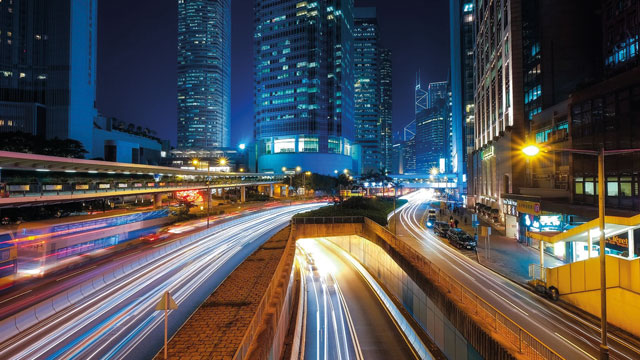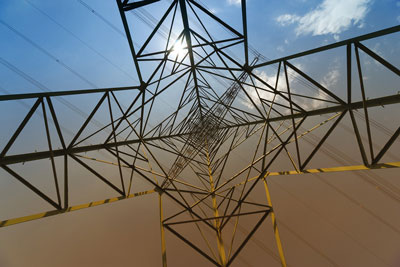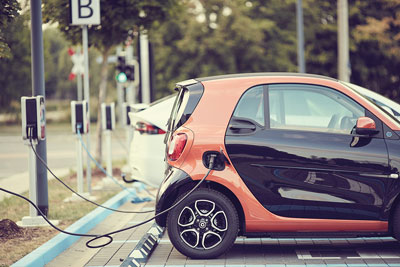The ability to turn demand for power on and off to match generation capacity could help to turbocharge a green recovery – but that needs reform of the electricity markets, says Rick Parfett, policy manager for the Association for Decentralised Energy.

During the peak of the Covid-19 crisis, the government’s focus must be on saving lives and preventing the infection spreading. In the coming months, however, it will need to take ambitious steps to secure economic recovery. This is a tough time for many businesses, and access to new revenue streams will be essential in helping them get back in production.
It is vital that the recovery aligns with the UK’s net zero commitment, putting the country at the forefront of a green industrial revolution. Demand side response (DSR) can help turbocharge a green recovery, rewarding customers for using energy flexibly, so that the UK makes best use of every megawatt of clean energy generated.
As the UK makes progress towards net zero carbon emissions, three trends will increasingly require a new approach. Huge volumes of renewable generation will connect to the system, creating new operability challenges and increasing the need for balancing services. Large numbers of people will buy electric vehicles, connecting them to the distribution network to charge them. And millions of heat pumps will be installed, also connected to the distribution network.
All these changes are positive, and each will play a major role in progressing to net zero. But if their decarbonisation potential is to be unleashed and costs are to be kept down, the electricity system will have to be much more flexible. This means making energy demand much more responsive, with the ability for large volumes of demand to be turned up or down quickly, as well as building increased energy storage capacity.

At the moment, the UK’s electricity system is not flexible enough for the current generation mix, never mind the future one. Wind turbines are regularly told to stop generating electricity because the system lacks the flexibility to handle it. The need to resort to this kind of measure causes the UK’s carbon emissions and air pollution to increase dramatically.
DSR can provide the flexibility needed to manage the three trends in a better way, reducing the need to turn off renewables or spend huge sums reinforcing the electricity grid. It allows greater use of renewable electricity, saves consumers money and rewards businesses and households for helping the system to decarbonise.
DSR simply involves energy users increasing, reducing or shifting demand in response to a price signal or an instruction from National Grid ESO. Examples could be a factory adjusting its consumption or a supermarket using backup generation at peak times to reduce the strain on the grid. Homeowners can provide DSR too, by charging their electric vehicle at the optimal time or using their heat pump or battery to provide services to the system.
DSR is already providing a range of system and balancing services, helping to manage the grid and keep costs down. To reach net zero, though, volumes need to increase rapidly. Participation needs to be simple, revenues need to be attractive and customers need to be able to get involved without losing their focus on their core business or day-to-day life.
To unleash this flexibility revolution, four radical changes need to take place.
First, distribution networks need to move beyond network reinforcement and turning off renewables as the default ways of managing system needs and issues. Instead, they need to put in place markets for flexibility, where customers are paid to adjust their consumption. They also need to help introduce clearer price signals, letting the user know the best times to consume electricity by making it cheap or even free when low-carbon power is flooding on to the system.
To achieve this, Ofgem must ensure that the next price control for the distribution network operators mandates that they adopt a “flexibility first’” approach, putting in place liquid markets for flexibility and introducing clearer price signals.
Second, National Grid ESO must move away from balancing the national electricity system through long-term contracts with large fossil fuel generators. These contracts increase the UK’s carbon footprint and, as these generators are phased out, threaten the security of the system.

Instead, National Grid ESO should buy all balancing services through open, competitive markets. This means giving users enough notice that National Grid ESO would like them to be able to adjust demand in a certain region, allowing businesses to optimise their processes to offer this flexibility. It means holding auctions in close to real time, so that industry knows what its production schedules will look like on the day in question. And it means announcing the volumes that it wants to buy, so industry knows how likely it is to be rewarded for its flexibility.
For this to happen, Ofgem must design National Grid ESO’s forthcoming price control to encourage it to procure all services through transparent and competitive markets that are open to all providers.
Third, clean, flexible energy needs to become the rule, not the exception, in all markets. For all the reports of weeks without coal and record levels of renewable generation, the majority of plant in the wholesale, balancing and capacity markets (see box) still runs on fossil fuels. This will not change overnight, but to begin the process these markets need to be open to all and their requirements reformed so that clean, flexible energy is able to compete on an equitable basis.
This area needs a big push, both from the government and Ofgem. All markets need to be opened to innovative market participants and reformed to allow them to compete cheaply and effectively. This process has already begun in the balancing mechanism, but other markets need to rapidly be opened up and reformed.
Finally, data and IT need to be radically improved. Many of the IT systems used by network operators are simply not fit for the future. This will become more and more of a problem as increasing flexibility is provided by large portfolios of small assets, such as electric vehicles or heat pumps. While each asset uses a relatively small amount of energy, they can provide important services to the system when aggregated together. Their small size, though, means that large numbers will need to be added together for this to be worthwhile – it is essential that doing this and entering them into markets is cheap and easy. Investment will be needed to set up automated, sophisticated IT systems, particularly for prequalification, testing, and dispatch of assets.
As for energy data, its transparency and quality are variable at best. This makes it difficult for providers of DSR to know what price they are likely to receive for their ability to shift demand, how often they will be asked to do so, or what the most useful and lucrative actions are likely to be. Good, transparent data is absolutely key to achieving net zero; it allows new business models to be built, National Grid ESO to ensure zero-carbon security of supply, and competition in markets to be fair.
The Energy Data Taskforce has recommended that all data be “presumed open” – that unless a piece of data is specifically marked as confidential, for reasons such as national security, it is made openly available in an accessible format.
High quality data and IT are the building blocks of net zero – to make sure they are available, Ofgem should make ambitious upgrades to IT and a presumed open approach to data an integral part of both National Grid ESO and the distribution networks’ price controls.
None of the above will be enough, however, without the participation of energy users. And everyone reading this article is, in their different way, an energy user. So consider this an invitation to take part in the net zero revolution.
If you are a business customer, consider how you could operate flexibly to help the system out and access new revenue streams. This might involve contracting with a DSR aggregator, which can advise how to make industrial processes more flexible and help you enter the market.
If you are a domestic consumer, explore the options available, from Time of Use tariffs to smart EV charging. A number of innovative companies are offering deals that mean you could pay less for your electricity in return for allowing them to optimise your consumption and provide system services.
Most importantly, remember that achieving Net Zero without breaking the bank requires flexibility to be the new normal, not an added extra. And that will require everyone to push for real reforms.
Glossary
The wholesale market – the market where suppliers, generators, traders and customers trade electricity, over a range of time periods ranging from several years ahead to on-the-day trading markets.
The balancing mechanism – the market that National Grid uses to balance electricity supply and demand on a second-by-second basis for each half hour trading period of the day.
Balancing services – other services that National Grid uses to make sure that supply and demand balance and that the electricity system remains stable and operable.
The capacity market – the market that provides payment to reliable sources of capacity, alongside their electricity revenues, so that they are able to supply energy when needed.
Distribution flexibility markets – markets run by the Distribution Network Operators so that they can buy services to help operate the electricity system at the local level.
National Grid Electricity System Operator (ESO) became legally separate from National Grid Electricity Transmission within the National Grid group on 1 April 2019. In practice, National Grid ESO manages the balancing of the electricity system but does not engage in roles such as building the grid.
Further information: Rick Parfett, policy manager,
The Association for Decentralised Energy
rick.parfett@theade.co.uk | www.theade.co.uk

